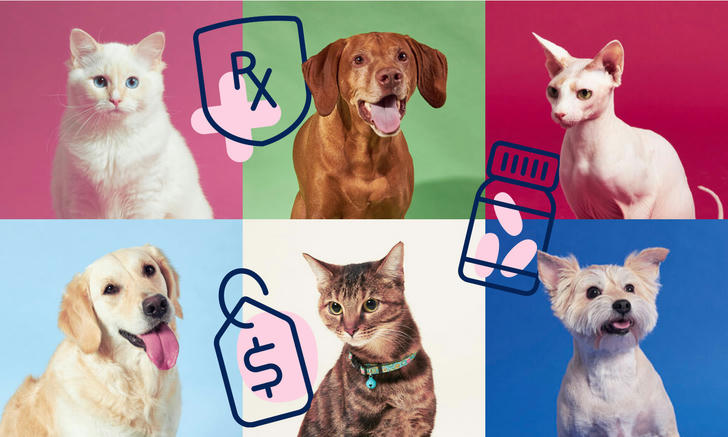Pet Insurance: A Simple Guide for Most People
As veterinary care advances, pets live longer—but treatments for accidents, illnesses, or chronic conditions can strain budgets. Pet insurance offers a safety net, covering unexpected medical costs while providing peace of mind. This guide breaks down how policies work, what they typically include, and key factors to consider when selecting coverage tailored to your pet’s needs.
Why Your Pet Needs Insurance

Did you know 67% of U.S. households now consider pets family members? For women and seniors living alone, furry companions often become emotional lifelines. But veterinary bills can shock even prepared owners:
Let’s face it: pets are family. They greet us with wagging tails, curl up with us on tough days, and fill our lives with unconditional love. But just like any family member, they can face unexpected health challenges—and those vet bills can hit harder than a chewed-up slipper. That’s where pet insurance steps in.
A broken leg repair: $1,500-$4,000
Cancer treatment: $5,000-$15,000
Emergency surgery: $3,000+
Pet insurance helps you say "yes" to life-saving care without draining retirement savings. Let’s break down how it works.
3 Key Reasons Pet Insurance Matters
1. Rising Costs of Pet Healthcare
Veterinary care costs have jumped 48% since 2017 (Nationwide data). Insurance helps manage:
Age-related conditions: Arthritis, kidney disease, diabetes
Accidents: Swallowed objects, car injuries
Chronic illnesses: Allergies, thyroid issues
Real Story: Martha, 68, avoided $8,200 in bills when her 10-year-old Lab needed hip surgery. Her $45/month plan covered 90%.
2. Fixed Income Protection
For retirees living on Social Security or pensions:
Average monthly premium: $30-$50 (dogs), $20-$40 (cats)
Typical deductible: $250-$500 annually
Reimbursement rate: 70%-90%
Pro Tip: Look for "senior pet plans" with lower deductibles for pets over 7 years old.
3. Peace of Mind
A 2023 ASPCA survey found:
82% of pet owners feel less stress knowing they’re covered
76% say it improved their pet’s quality of life
How to Choose the Best Plan: 5-Step Checklist
| Factor | What to Look For |
|---|---|
| Coverage Type | Accident-only vs. comprehensive (illnesses, hereditary conditions) |
| Age Limits | Some insurers stop new enrollments at pet age 14 |
| Pre-existing | Most exclude conditions diagnosed before coverage |
| Payment Model | Reimbursement (you pay vet first) vs. direct pay (insurer handles bills) |
| Wellness Add-ons | Vaccines, dental cleanings – useful for older pets needing preventive care |
Top 3 Providers for Seniors:
Pets Best: No upper age limits, 24/7 vet chat
Figo: 100% reimbursement option, cloud-based records
Trupanion: Lifetime per-condition deductible, no payout limits
Let’s Debunk Myths!
❌ Myth 1: _"Insurance is too complicated for seniors."
Truth: Most insurers offer:
Paper claim forms by mail
Dedicated phone support
Family member authorization options
❌ Myth 2: _"Pre-existing conditions aren’t covered."
Truth: Some insurers like Embrace cover curable conditions after 12 months.
❌ Myth 3: _"It’s cheaper to just save money."
Truth: The average emergency costs $1,200-$5,000 – equivalent to 3-10 years of premiums.
Getting Started: Your Action Plan
Step 1: Compare plans using these free tools:
Step 2: Ask your vet for insurer recommendations – they know your pet’s health history.
Step 3: Enroll BEFORE major health issues arise. Waiting periods apply:
Accidents: 2-15 days
Illnesses: 14-30 days
Orthopedic issues: 6-12 months

Final Thoughts: Protect Your Furry Family
As Helen, a 72-year-old cat owner, shared: "When Mr. Whiskers needed $3,000 surgery, I didn’t have to choose between his life and my savings. That’s priceless."
Pet insurance isn’t just a policy; it’s a promise to your furry family member. It’s saying, “I’ve got your back,” no matter what life throws your way. Because they’d do the same for you—and they already do, every single day.
Don’t wait for an emergency to wish you’d signed up. Your pet deserves the best care, and you deserve peace of mind. Start comparing plans today—it’s one decision you’ll never regret.
